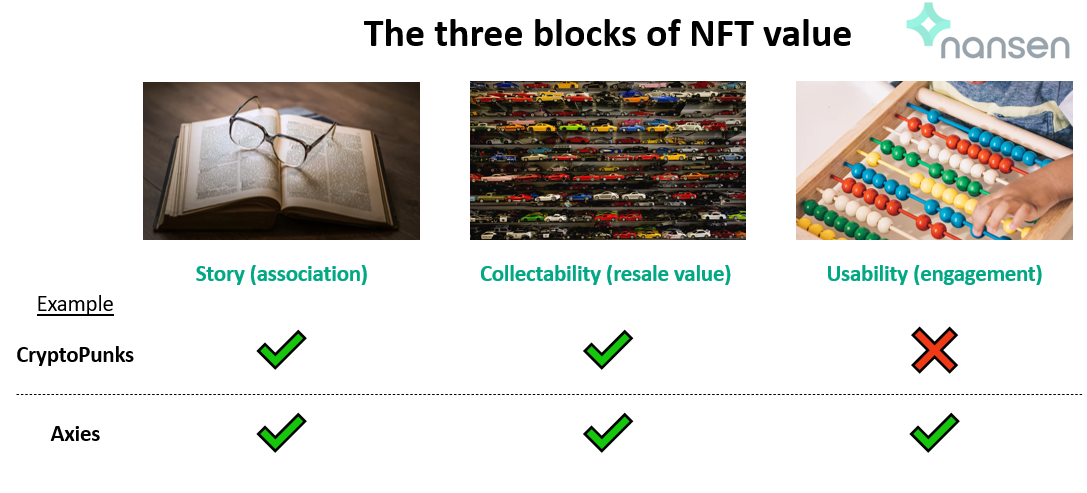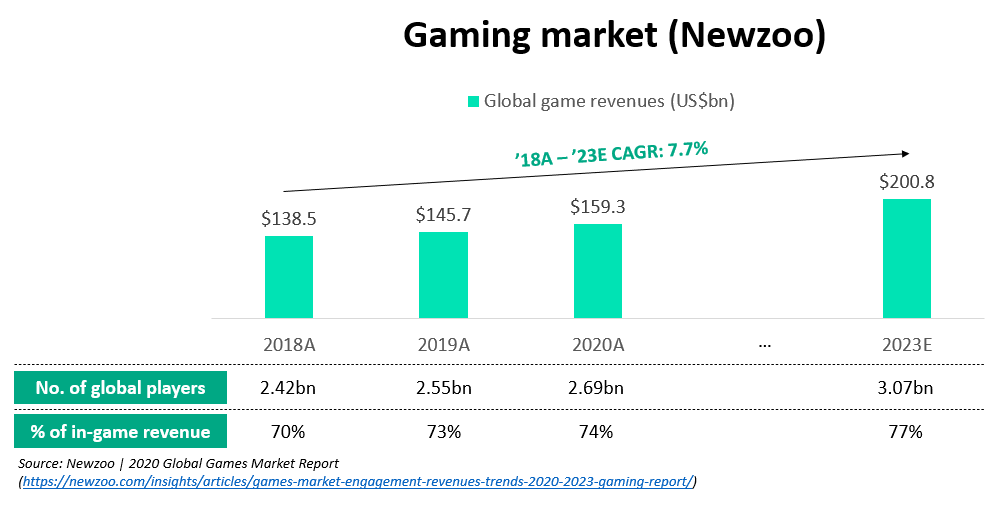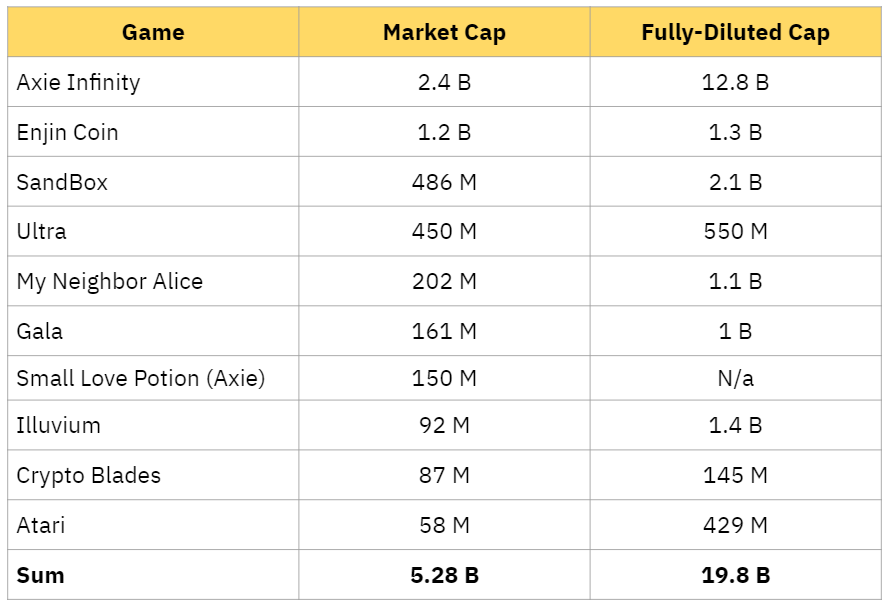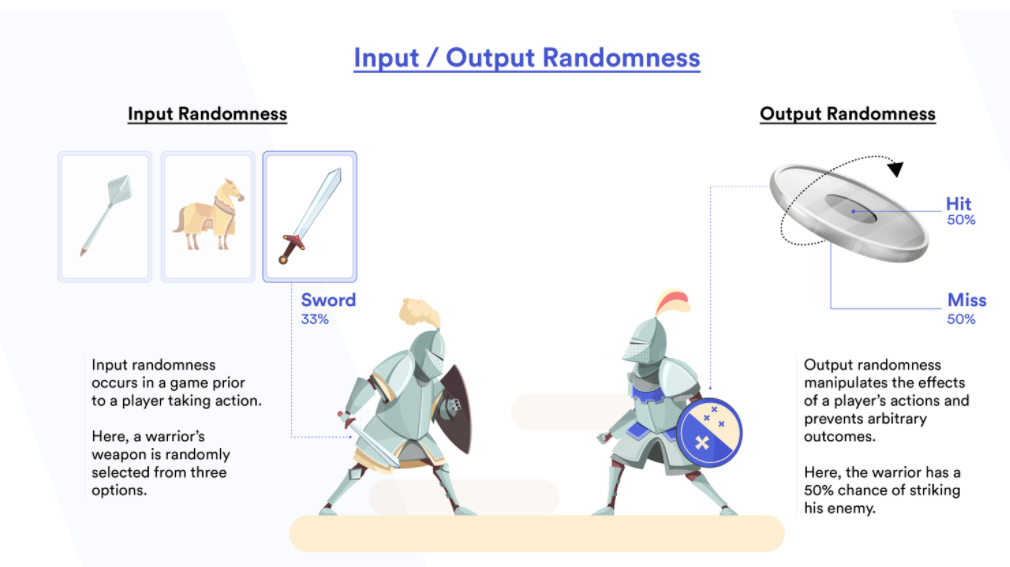What is Play to Earn? The future of Play to Earn Games

What is Play to Earn?
Play to Earn is the method in which players can earn rewards and money while playing games. Just like how it’s called, it allows everyone to make money simply by playing games.
The game industry starts with Pay-to-Play to Free-to-Play, and now to Play-to-Earn. In fact, people can “earn” by playing games a long time ago through selling accounts, trading ingame items, joining professional tournaments,...
Nevertheless, Play to Earn has now come to another level, where the “earn” aspect becomes much more explicit.
Why has Play to Earn existed for a long time?
Play to Earn could not make any remarkable progress until the integration of blockchain and crypto come into play. It has implemented some key advantages, including:
- Using NFT as leverage for Play to Earn games.
- True ownership.
Using NFT as leverage
If you have dug deep into this market sector, you will realize how potential it is. Before, the majority of NFTs are in the form of arts, pictures,... The value behind them was mostly (1) story and (2) collectability. Gaming has created another value for NFT - usability.
This has expanded the reach of NFT, therefore making this market more widespread and setting a step closer to the mainstream.

True ownership
This is an enormous improvement to gaming, whereas every ingame item users own is truly theirs, and nothing can change that even the game developers.
This used to be an existing problem to traditional games, even though people either didn’t recognize it or actually accepted it being that way. In the past, ingame items are only available within a specific platform, where everything is controlled by the game developer: Supply, Attributes, Value... not by users. If the game was closed, all users’ assets and money spent would disappear.
Cases like this are not rare. For example, the video game series FIFA releases a new edition annually. After each upgrade, all users’ progress is lost, and they have to start from scratch again. The amount of money being wasted in such games has been unimaginable, but still continues to rise.
How NFT with its underlying attributes can address this problem:
- True ownership: Users own ingame assets in the form of NFTs, which are verified by blockchain technology. As a result, there is no way that these NFTs can be taken or modified by game developers, even if the server crashes. These tokens help users to use them anywhere, trade anything of similar value, without being limited to an individual platform.
- Store of Value: A characteristic of NFT is that the token itself is unique, whereas its supply and attributes are fixed and cannot be changed. Hence, the rarity of a particular NFT cannot decrease, but can even increase. With the range of applications being widened gradually, NFTs are having more and more use cases across different platforms.
Combining all of the above advantages, we can conclude that crypto has really put Play to Earn to another level, and in return, Play to Earn can only progress at its best through blockchain and crypto applications. Users can now confidently regard playing games as a real job for them to make a living.
Massive potential of Play to Earn
Axie Infinity - The pioneer for Play to earn games
Axie Infinity has really changed how the game industry works, and even how people live and work, especially in the Philippines. The low average income in addition to the influence of the Covid-19 pandemic forced them to find another income source, where Axie emerged like a savior.
Learn more: What is Axie Infinity & AXS Token.

With the cumulative protocol revenue exceeding any other dApps for months, Axie is a typical example of the potential of Play to Earn games, which has led the way for other projects in the same niche arising, learning, and releasing better products.

Promising market
To have a relative view of how far on-chain gaming can develop, let’s take a comprehensive look at the value of the current gaming market.

According to Newzoo, one of the top data collectors on the gaming market, the gaming market has witnessed a gradual growth annually. At this rate, this market can totally reach $200B revenue and 3 billion global players in 2023.
At the same time, the percentage of in-game revenue can escalate to 77%. Combining the total Market Cap of the current top 10 on-chain games (which mostly account for the Market Cap of the whole on-chain gaming sector), it can be clearly demonstrated that this market is still immature and has lots of room for growth.

However, the aforementioned statistics from Newzoo have only included the traditional gaming market. With that of Play to Earn, there is still a lot to be developed.
Gaming can possibly grow into more than just “games”, just like how Axie Infinity has provided Philippines residents with a high and sustainable income. More use cases can be created from games, and earning is just one of them.
Current obstacles
Entry barriers
Highly promising as it is, the on-chain gaming market is still having too many entry barriers for new players.
Let’s take Axie Infinity as an example. From the beginning, it costs only about $200-300 to start the game with a decent lineup. Now with its tremendous growth, playing the game requires thousands of dollars. And that is just about playing the game; if you want to improve your gameplay experience, you need to upgrade your Axies which leads to an even higher expense.
Even though there are cheaper games to start playing like CryptoBlades, Faraland... which cost about $500-700, this number is still too high for an average user to involve in.
To reach mainstream and a larger audience, some modifications for Play to Earn games are needed:
- Anyone can participate.
- Free to Play, or require only a small expense.
- Play to Earn factors can become more flexible.
Ingame currencies should not be too volatile like those of current games. A typical example is Aavegotchi with its bonding curve model that helps the price of the native token GHST stable and less exposed to pump-dump situations, which can be seen in other tokens such as AXS (Axie Infinity) or ALICE (My Neighbor Alice).
Infrastructure
Axie Infinity using Ronin as a Layer 2 is a perfect example of how games should not and mostly cannot be developed on Ethereum.
In order to process a substantial number of transactions and provide a smooth gameplay experience at a low cost, Play to Earn games should be deployed on Ethereum alternatives (other blockchains, or Ethereum Layer-2). No one is willing to pay up to $100 and wait for a few minutes just to complete an ingame transaction.
Gameplay
Currently, on-chain games focus mostly on the Play to Earn factor to attract users, whereas other imperial elements like gameplay are being neglected. An evident difference in gameplay can be seen when comparing on-chain games with traditional games.
There are a number of promising games that are carefully developing the gameplay aspect like Star Atlas on Solana, or Ember Sword on Polygon. Nevertheless, they are still in the development stage and yet to be released.
A part of this problem is that: Big companies that constantly produce AAA games in the traditional gaming market have not paid attention to this market sector, considering it is a fairly new one. However, with more and more actions have been made from those companies showing their interest in this field, we can expect something changing really soon, especially in gameplay.
The future of Play to Earn
Is Play to Earn a short-term trend?
Regarding its gigantic potential and how it can change the gaming industry, or even further, the labour market, it is my personal opinion that Play to Earn is not a short-term trend like food coins or animal coins.
More than just a potential market, Play to Earn has not only created reasonable use cases for NFT but also provides people with a sustainable income. If Play to Earn can be integrated into the traditional gaming market, the whole gaming industry will be changed forever.
Note: A long-term trend does not necessarily mean that the prices of game tokens will continually increase from here. Axie Infinity has been developed since 2018, but could only spread its name in 2021.
For an AA or AAA game to be released on the market, it needs to be developed for a few years together with a massive expense, not to mention how long it might take for an effective revenue model to be created.
The evolution of the gaming space
NFT gaming actually had its first appearance in 2017 with the debut of CryptoKitties - an on-chain game that allows players to purchase, collect, breed, and sell virtual cats. Even though the game couldn’t accomplish any significant success, it set the foundation for a new generation of gaming, which can be seen as the first-gen of NFT gaming.
Now in 2021, we can witness the emergence of Axie Infinity or The God Unchained, along with numerous promising NFT games. More than just games, they have brought about the innovative Play to Earn factor, introducing the next generation of NFT gaming.

In the next generations, on-chain games will be able to solve the existing limitations of 2nd-gen games. At the same time, they will provide users with better gameplay quality, remove entry barriers, and potentially become more popular to the mass.
Storage
You may find this hard to believe, but there is a high chance that Storage is the crucial infrastructure that any on-chain game in the future will need.
Secure as it is, storing data on blockchains like Ethereum is extremely expensive. According to Seba Bank, in order to store 1 GB of data on Ethereum at 100 gwei, more than 60,000 ETH is needed. As a result, instead of being stored on-chain, NFTs only contain a link to the data reserved at a specific server.
Consequently, in case the server crashes, NFTs will actually be broken links, and users will not be able to see them. Authors of those NFTs will have to replicate them by publishing new ones, which is of no guarantee whether their value will remain the same.
In fact, at the moment, most games store only a little data on-chain, whereas most of the data are stored in other servers.
Hence, if Play to Earn and on-chain gaming continue to grow, Storage will be the key infrastructure for this trend. Some decentralized storage applications can be mentioned as Filecoin, Arweave, IPFS,...
Randomness
To evaluate a promising game, randomness is an incredibly important factor to consider, which determines how far the game can go.
Randomness is the foremost priority in games nowadays. Since it reduces the “Pay to win” situation and further incentivize free-to-play users to grind, this element has been widely applied in famous games:
- League of Legends implements Hextech Chests.
- FiFa implements card packs.
- Gambling games like Pokers, Monopoly,... implement the RNG (Random Number Generator) method to ensure genuine randomness.
For on-chain games, using the VRF (Verifiable Random Function) model from Chainlink is a great way to start. Axie, Aavegotchi,... have integrated with their own VRF.

Interoperable NFT
Interoperable NFT means that NFT can be used across different platforms
Take the example of meebits; the project team says that their NFTs can coexist in various Metaverse. Characters in meebits can freely wander in Sandbox, Webaverse, and countless other universes.
As mentioned earlier, enabling NFTs in multiple different platforms is crucial to increase the value of those NFTs. By being interoperable, NFTs help gaming become more attractive than ever, therefore making the Play to Earn trend more appealing.
However, at the moment, Interoperable NFT is only at an early stage, whereas mostly everything is just an idea without details. It is worth noting the importance of this aspect to the Play to Earn trend and following projects that develop this vision.
Some potential Play to Earn Crypto Games
Star Atlas
Star Atlas is a grand strategy game of space exploration, territorial conquest, and political domination.
The prominent thing about this game is that it has two separate types of currencies. Even though it is not clear how these 2 tokens will be applied in the game, introducing dual currency initially already shows the team’s broad vision on Play to Earn gaming in general.

Aavegotchi
Aavegotchi is the NFT platform on Ethereum that combines with the lending mechanism from Aave. Its bonding curve model is the most impressive feature so far, which helps ameliorate the token’s inflation.
Conclusion
You’ve been through an article about Play to Earn. I hope it has helped you in gaining more valuable insights into this market sector and understanding its potential. Here are some notable points:
- The Play to Earn gaming market is a long-term trend with massive potential, not a short-term one.
- The current situation of this industry is, however, a bit overhyped when there are only a small number of games with little revenue, while the number of “apes” and “FOMO” users keeps on increasing.
- The Play to Earn market still has a lot of room for improvement, leading to numerous investment opportunities.